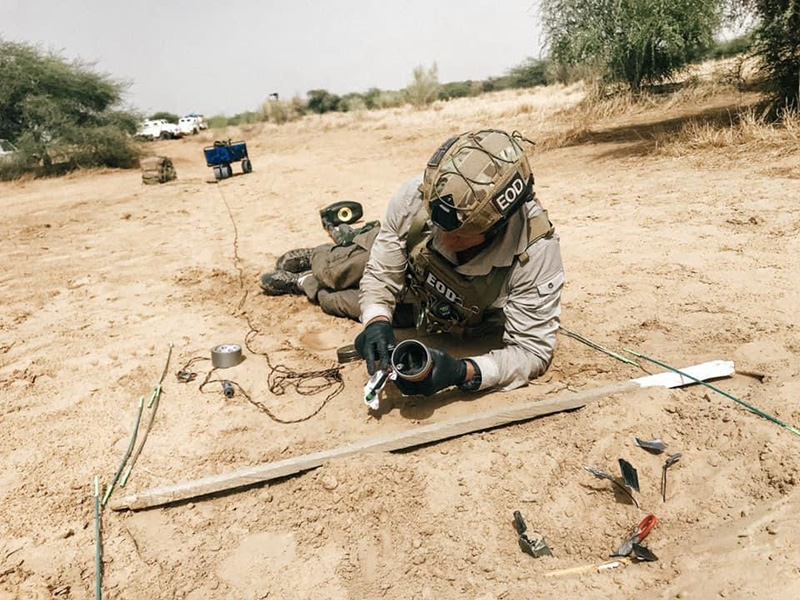Landmines in a latrine in Mozambique
Last month, SafeLane’s deminers in Mozambique took on an unusual job to keep the local community safe in the Govuro District in Inhambane Province. They worked to remove antipersonnel mines and a hand grenade from a latrine.
SafeLane Global (formerly BACTEC Mozambique Lda.) began working in Mozambique in 2004 to demine and conduct battle area clearance. In our daily work supporting the ongoing development of this stunning nation of opportunity, we continue to clear explosive ordnance as well as mines that may have been displaced by flooding for example, or which were left or laid outside of known minefields.
How and why we work side by side with local communities when clearing explosive remnants of war
Local people in the communities in which we’re operational always have exceptional and invaluable insight to share to support our land release objectives.
From the Bedouins in Western Sahara who tell us where essential water sources are for us to clear and secure first, to the farmers in Mozambique who can show us where unexploded ordnance lies in otherwise impenetrable foliage…
To capture this critical information, we undertake a desktop study of which a non-technical survey forms a part. The non-technical survey might see us arranging community engagement sessions or giving out questionnaires for example. Through so doing we invite local citizens to share their essential knowledge.
They might know where accidents have happened in the past, where paths are perhaps avoided or where we are needed most for example. This information often helps inform our survey and clearance methodology.
Landmines in a latrine – an unusual problem!
Recently, whilst supporting our client ahead of planned seismic work in Inhambane Province, we were made aware of a contamination issue that was outside our area of clearance responsibility. As the intelligence we were given by the community clearly identified a lethal threat, our client asked us to expand our area of operation and supported us to clear the danger.
Using both Minelab and Schonstedt detectors, our deminers cleared a lane for an excavator to approach the latrine. Vegetation and topsoil were then removed mechanically by the excavator.
The mechanical team proceeded to open a shaft next to the latrine to gain side access to it to ensure it didn’t collapse when they started to excavate the mines and UXO.
The team manually excavated the entire latrine area and successfully removed six antipersonnel blast mines (Gyata-64 mines), one antipersonnel fragmentation mine (a POMZ 2) and one hand grenade (F1).
Our team then prepared and demolished these explosive remnants of war safely, rendering the entire site secure again for the local community to use.
And in answer to the question that’s probably on the tip of your tongue…i.e., how did this explosive ordnance end up in a toilet…well, a local farmer kept finding dangerous items on his land, and to protect him and his neighbours and livestock, he carefully placed them down the latrine.
All in a day’s work for SafeLane!
Find out how we can help you


